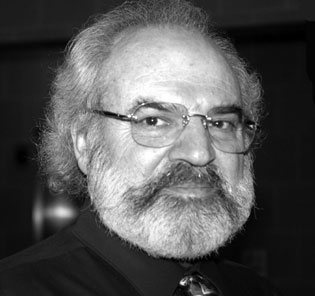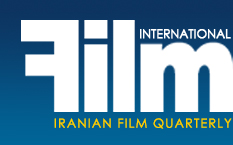|
An Interview with Dr Hamid Naficy
The End of Homogeneity at a Time of Pluralism
by Manouchehr Najafpour
|

Dr. Hamid Naficy's books, articles, and interviews on documentary films and visual media, particularly those published recently have been valuable works marked with precision. He has worked hard to introduce Iranian cinema in the United States. He has always rigorously supported young filmmakers and said that they had started a new chapter in filmmaking in Iran. This interview is being published just about the time when his A Hundred Years in Social History of the Iranian Cinema is about to be published in the United States. Film International interviewed him during his visit to Heidelberg, Germany.
You started your career in Iran by teaching documentary films at the College of Cinema and Television before 1979 Islamic Revolution. Are you still preoccupied with documentaries? Is it still your area of research?
Yes, I still work on documentary cinema. Last year, I had a course at the Northwestern University which was a seminar for graduate students. Documentary cinema has undergone a lot of changes and has become a different and, at the same time, interesting cinema, although documentary structure and documentation, in general, has turned into an extensive crisis. Currently, all previous techniques in documentary filmmaking have been questioned and new techniques and styles have evolved. For instance, reality TV in Europe and America has created an exaggerated and superficial situation and has blurred boundaries between reality and falsehood. Characters in these films are real, but they have been chosen in such a way as to reflect different ethnic, linguistic, and cultural backgrounds, behaviors, and attitudes. Then, they put this selected group in an unreal situation in order to impress viewers. They do not have a clear screenplay. For instance, the popular program, Survivor, is about adventures of two groups on a Caribbean island. They have missed a ship or an aircraft and, now, they have to make a shelter, a home and then they have to hunt, cook, etc. Then, there are conflicts among them because of their different backgrounds. All this is made into a film in a very skillful way. During several weeks, these characters have to take part in contests about, for example, who can go to another island before the others or who can solve a problem and so on. They get points for doing so and, at the end they decide who should leave the island. During these weeks, all sorts of rivalry and enmity develop among these characters as they try to get rid of their rivals. Finally, there is a winner who gets the one-million-dollar prize. This is an artificial situation. But is this a documentary film? All these behaviors had been planned beforehand, but using dramatic techniques, they try to pretend that what viewers see is real. Although no screenplay has been written, there is one to follow. Filming and editing are also exaggerated. At the time being, there are plenty of such programs on TV. There are also increasing numbers of programs of another genre on most TV networks: they select a number of unknown people with some acting talent. Then, they put them in a house to live together for a few months. Then, they film whatever they do. Sometimes, there are differences and conflicts between them. They film them for hundreds of hours and select some footage for a number of programs. Well, is this a documentary? While these individuals are aware that they are acting in front of a camera, they no longer show their own characters because they know many of those conflicts are simply made up and flared up by program makers. With the expansion of the internet networks, there are more possibilities for filming depicting people's private lives. They put a camera where they live and work and send their videos on a website, showing them to other people all over the world. Is this a documentary when they know that they are acting based on a plan?
[Page: 58]
|
|
|
|
|
President & Publisher
Massoud Mehrabi
Editors:
Sohrab Soori
Translators:
Sohrab Soori
Behrouz Tourani
Zohreh Khatibi
Contributors
Saeed Ghotbizadeh
Mehrzad Danesh
Advertisements
Mohammad Mohammadian
Art Director
Babak Kassiri
Ad Designers
Amir Kheirandish
Hossein Kheirandish
Cover Design
Alireza Amakchi
Correspondents
E.Emrani & M. Behraznia (Germany)
Mohammad Haghighat (France)
A. Movahed & M. Amini (Italy)
Robert Richter (Switzerland)
F. Shafaghi (Canada)
B. Pakzad (UAE)
H. Rasti (Japan)
Print Supervisors
Shad-Rang
Noghreh-Abi
Gol-Naghsh
Subscription & Advertising Sales
Address: 10, Sam St., Hafez Ave., TEHRAN, IRAN
Phone: +98 21 66722444
Fax: +98 21 66718871
info@film-magazine.com
Copyright: Film International
© All rights reserved,
2023, Film International
Quarterly Magazine (ISSN 1021-6510)
Editorial Office: 5th Floor, No. 12
Sam St., Hafez Ave., Tehran 11389, Iran
Printed in Tehran
Publishing Date Spring 2010
*
All articles represent views of their
authors and not necessarily
those of the editors
|
|
|

